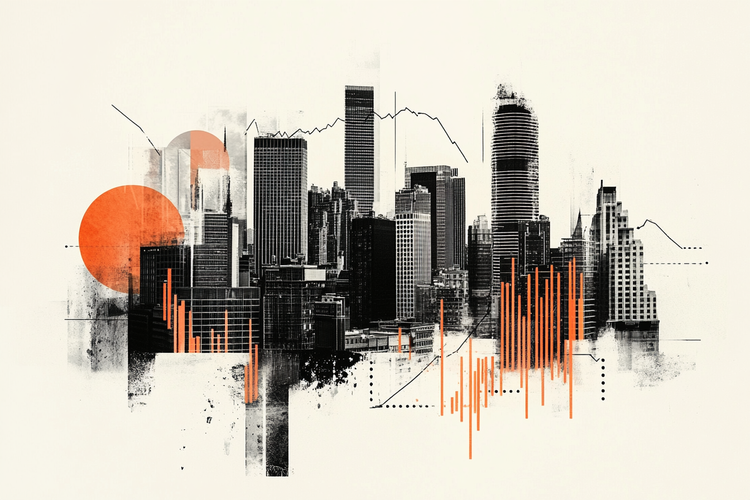- The AUD/USD pair is trading on a weaker note near 0.6720 during the early Asian session on Thursday.
- Weaker US job openings data suggested a continued slowdown in the US labor market, weakening the USD.
- Traders will be watching RBA’s Bullock’s speech ahead of the US ISM Services PMI on Thursday.
The AUD/USD pair is weakening around 0.6720 during the early hours of the Asian session on Thursday. The pair is trading in a volatile session amid Chinese economic concerns and weakening US Dollar (USD). Traders will take further cues from Reserve Bank of Australia (RBA) Michele Bullock’s speech ahead of the US ISM Services PMI, due out later on Thursday.
The weaker-than-expected US JOLT job openings data for July signaled a further slowdown in the US labor market, triggering expectations of a possible 50 basis points (bps) rate cut by the US Federal Reserve (Fed) in September. This, in turn, could weigh on the USD against the Australian Dollar (AUD). Traders will be keeping an eye on the US Non-Farm Payrolls (NFP) for August on Friday. Analysts at Goldman Sachs noted, “A market correction could start to gain traction if payrolls are weak on Friday.”
On the Australian front, Australia’s gross domestic product (GDP) growth grew by just 0.2% in the April-June period and 1% over the past year, the Australian Bureau of Statistics reported on Wednesday. The report said the Australian economy recorded its worst performance in more than 30 years, excluding the first year of the COVID-19 pandemic.
In addition, fears of an economic slowdown in China could contribute to the AUD’s fall, as China is an important trading partner for Australia. China’s Caixin manufacturing PMI rose to 50.4 in August from 49.8 in July, below the estimate of 52.2.
Traders are looking forward to RBA’s Bullock’s speech on Thursday for more insight into the economic and interest rate outlook. Any hawkish comments from Bullock could boost the Australian dollar and limit the pair’s downside.
Australian Dollar FAQs
One of the most important factors for the Australian Dollar (AUD) is the level of interest rates set by the Reserve Bank of Australia (RBA). Since Australia is a resource-rich country, another key factor is the price of its largest export, iron ore. The health of the Chinese economy, its largest trading partner, is a factor, as is inflation in Australia, its growth rate and the Trade Balance. Market sentiment, i.e. whether investors are betting on riskier assets (risk-on) or seeking safe havens (risk-off), is also a factor, with risk-on being positive for the AUD.
The Reserve Bank of Australia (RBA) influences the Australian Dollar (AUD) by setting the level of interest rates that Australian banks can lend to each other. This influences the level of interest rates in the economy as a whole. The RBA’s main objective is to maintain a stable inflation rate of 2%-3% by adjusting interest rates up or down. Relatively high interest rates compared to other major central banks support the AUD, and the opposite for relatively low ones. The RBA can also use quantitative easing and tightening to influence credit conditions, with the former being negative for the AUD and the latter positive for the AUD.
China is Australia’s largest trading partner, so the health of the Chinese economy greatly influences the value of the Australian Dollar (AUD). When the Chinese economy is doing well, it buys more raw materials, goods and services from Australia, which increases demand for the AUD and drives up its value. The opposite occurs when the Chinese economy is not growing as fast as expected. Therefore, positive or negative surprises in Chinese growth data often have a direct impact on the Australian Dollar.
Iron ore is Australia’s largest export, worth $118 billion per year as of 2021 data, with China being its main destination. The price of iron ore can therefore be a driver of the Australian dollar. Typically, if the price of iron ore rises, the AUD rises as well, as aggregate demand for the currency increases. The opposite occurs when the price of iron ore falls. Higher iron ore prices also tend to lead to a higher probability of a positive trade balance for Australia, which is also positive for the AUD.
The trade balance, which is the difference between what a country earns from its exports and what it pays for its imports, is another factor that can influence the value of the Australian dollar. If Australia produces highly sought-after exports, its currency will gain value solely because of the excess demand created by foreign buyers wanting to purchase its exports versus what it spends on buying imports. Therefore, a positive net trade balance strengthens the AUD, with the opposite effect if the trade balance is negative.
Source: Fx Street
I am Joshua Winder, a senior-level journalist and editor at World Stock Market. I specialize in covering news related to the stock market and economic trends. With more than 8 years of experience in this field, I have become an expert in financial reporting.







